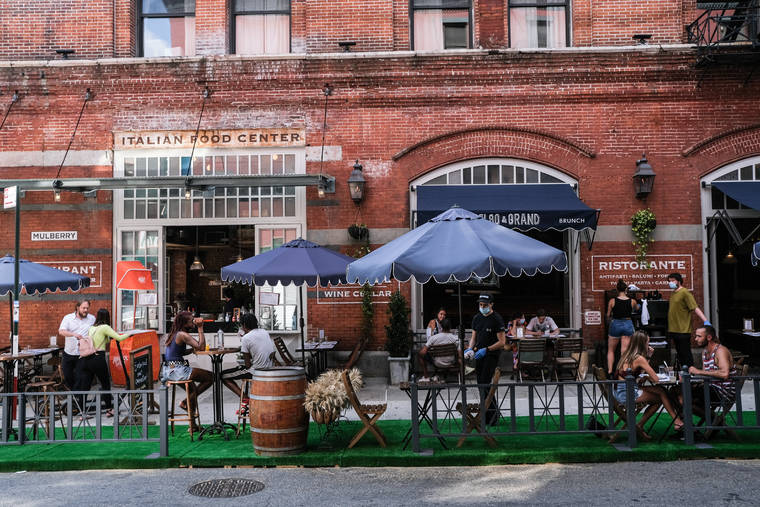There was a lot to swallow in 2020. Our plates have been too full, as we chewed on now-commonplace terms like personal protective equipment, contact tracing, quarantine, social distancing and essential, or front-line, workers. All the while, the liquid pleasure in our glasses has needed refilling, perhaps with more frequency than we’d like to admit.
The pandemic changed the way we work, learn and play, and certainly the way we eat and drink. Here, in no particular order, is a recap of some terms that defined the way we dined when 6 feet became the measurement that mattered.
Comfort food: Mac and cheese, fried chicken, casseroles, tacos, pizza, pasta, soup — you name it, we ate it and called it comfort. The pantry snack shelf offered plenty of comfort, too.
Quarantine 15: These were the extra pounds that some of us gained as a result of staying hunkered down at home, stress-eating, day-drinking, ordering takeout and doomscrolling in our pajamas.
Curbside: This is the safest way to transfer a pickup order from restaurant to customer. The best curbside operations keep things socially distanced and contactless, letting you pay in advance and simply pop the trunk upon arrival — no need to exit the car. Curbside waned over the summer. It is back.
Online ordering: This technological feature is something that every restaurant wished it had set up by the time COVID-19 arrived.
Reduced or limited capacity: In many areas of the country, restaurants were permitted to reopen for on-premises dining and were required to limit capacity, based on the square footage of public space, and to seat parties at least 6 feet from one another.
Contactless menus: Once a thing primarily among internet cafes, contactless menus have replaced the physical menus at many restaurants. These menus feature quick response (or QR) codes that customers scan with a smartphone camera. It takes them to an online digital menu, where they can view food and beverage options.
COVID surcharge: This fee — which some restaurants around the country tacked on to the bill to help pay for personal protective equipment, hand sanitizer, cleaning supplies and even increased food prices — riled a lot of diners.
Family meal: This previously is what the industry called a pre-service meal for the staff served at some restaurants, but, with the rise of takeout during the pandemic, the term took on another meaning. Harried parents, working at home while dealing with kids learning remotely, needed help with dinner. Restaurants responded with take-and-bake (or reheat) aluminum trays of mains, sides and something sweet, for the entire household, rather than individual orders.
Mask policy: Whether masks were mandated for customers was the most contentious restaurant issue of 2020.
Plexiglass: This is the functional interior décor item of the year. Plenty of dining rooms now have plexiglass partitions between booths, some more professional-looking than others. Plexiglass also can be seen protecting those manning cash registers, reception stands and even buffet lines.
Outdoor dining: In 2020, the best seat in the house wasn’t a see-and-be-seen “display table,” or a secluded corner booth. Prime seating was anywhere outside, even in a parking lot — the farther away from other people, the better.
Pivot: This was the verb of the year for restaurateurs, who shifted repeatedly in response to every round of state and local guidelines, public health advisories and new findings about how the virus is spread. Operators weighed the sentiments of staff and guests as they determined whether, when and how to reopen safely. With revenue from on-premises dining slashed, they also scrambled to bring takeout programs into the digital age, and built new revenue streams — from online marketplaces to ghost kitchens to virtual culinary events. It’s the preferred course of action when the alternative is “to perish.”
Bars and clubs: These are on the wish list for 2021. (In the meantime, see alcohol delivery.)



